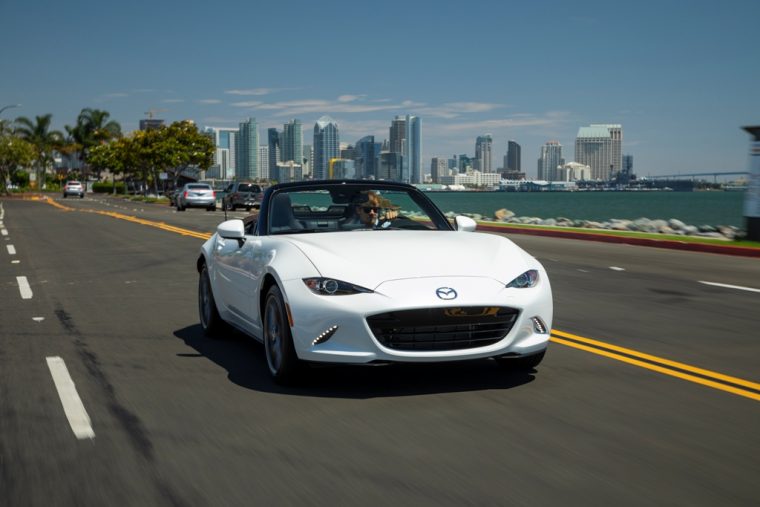3 Cool Facts Straight from the Mazda Miata Design Chief

Masashi Nakayama has spent the last 30 years refining the iconic Mazda MX-5 Miata. In other words, he’s been a part of Mazda for pretty much the Miata’s entire lifetime, given that the model celebrated its 30th anniversary earlier this year. Here are a few of his insider insights on this legendary roadster.
Luxurious Late-Model Vehicles: The Mazda CPO Program
Rejected designs
When the third-generation NC Miata models were in development, Nakayama floated an exterior design that resembled the modern, sharp-looking ND model. However, that design didn’t make it to production. Instead, the automaker went with the subdued, rounded design to make the vehicle appear smaller. Mazda wanted a smaller-looking vehicle because the NC was a fair bit larger than its predecessors. Nakayama isn’t bitter about his rejected design — he’s proud of what the team developed. Plus, Nakayama became the chief designer entrusted with the next generation of Miatas, where he applied the sharper new look.
Downsizing the Miata
When designing the fourth-generation ND Miata, Mazda sought to shave excess weight off of the vehicle, and shrink its overall size. The target weight was 2,200 pounds. To achieve the goal, Nakayama deployed lightweight and compact technologies, like LED lighting. Nakayama and his team also considered safety when shrinking the car — they moved the seats inwards and created a new safety system that’s designed to lessen the impact on pedestrians in the event of a collision. This system is designed to raise the hood if an impact occurs, which softens the blow.
Stunning Design: Check out the Mystery Mural
Affordability matters
In addition to controlling the Miata’s size, Nakayama feels it’s important to keep its sticker price under control, too. Since it’s meant to be affordable, it’s not designed to mount a huge engine. Using a smaller engine, in turn, keeps its weight down. Since it’s lightweight, it doesn’t need big brakes. These seemingly simple factors work together to bring you a nimble, fun-to-drive, affordable roadster.
Source: CNET

The News Wheel is a digital auto magazine providing readers with a fresh perspective on the latest car news. We’re located in the heart of America (Dayton, Ohio) and our goal is to deliver an entertaining and informative perspective on what’s trending in the automotive world. See more articles from The News Wheel.

